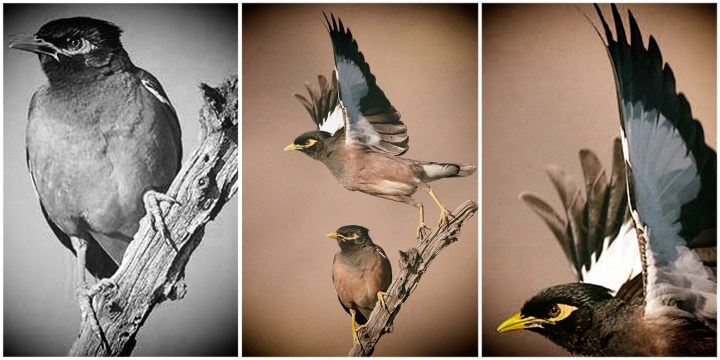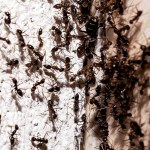INVASIVE ALIEN BIRDS
Encroaching Indian mynahs ruffle feathers in Kruger Park

For more than a century the Indian mynah has been on a steady march across South Africa and now the troublesome invader is settling in the Kruger National Park and this has conservationists worried.
Indian mynahs are not new to the Kruger National Park. Sightings began two decades ago, but these were rare and the birds didn’t appear to stay for long.
However, over the past three years, those sightings have drastically increased with some birds spotted nesting, suggesting the mynahs are putting down roots.
There is now concern over what effect these newcomers will have on other bird species in the park.
In a paper that was published in the journal Biological Invasions, data suggests that the mynahs in Kruger National Park are in the initial phase of establishment.
“We are a bit worried because it seems like with the mynah populations that have built up around the park, they are going to keep moving in. And we have seen them displace other birds from nesting holes,” says Dr Llewellyn Foxcroft, a scientist with SanParks who works with the Centre for Invasion Biology at Stellenbosch University.
Indian mynahs have also been seen stealing material from buffalo weaver nests and have a reputation for being aggressive to other bird species.
There has even been a recording outside Kruger of mynahs preventing adult green wood hoopoes from entering their nests, resulting in their chicks dying.
Human settlements
As with their city cousins, most of the mynahs spotted in the Kruger National Park are sticking around human settlements where they forage for food and nest in various structures, although a few have been spotted feeding out in the bush.
“We have seen them in the central north of the park feeding alongside egrets, where wild animals have walked and disturbed insects,” explains Foxcroft.
It is believed that the first mynah arrived in Durban in 1902 with a cage bird dealer. Mynah escapees quickly established themselves and have slowly spread throughout the country, hopping from town to town.
South Africa is not the only country dealing with an alien mynah problem. The bird’s native distribution is from southeast Asia through the whole of the Indian subcontinent and up into Afghanistan. But since the 18th century, the bird has been introduced and has established itself in several countries, including Australia, New Zealand, the United States, Hawaii and Madagascar. The International Union for Conservation of Nature’s Invasive Species Specialist Group has declared the Indian mynah as one of 100 of the world’s worst alien invasive species.
Besides Kruger Park, Indian mynahs have so far been recorded in three other South African national parks, these being Golden Gate Highlands, Mapungubwe and Marakele.
So far the only other alien birds recorded in Kruger are a single domestic homing pigeon which left the park shortly after being spotted, and house sparrows which are sometimes seen around human settlements in the reserve.
Rose-ringed parakeet
The mynah joins another worrying exotic that is threatening, in particular, birds that prefer nesting in cavities. That is the rose-ringed parakeet which, although it hasn’t been spotted in Kruger, has become a common sight in towns across South Africa.
“I think the parakeets are far worse,” says Professor Colleen Downs, the South African research chair in ecosystem health and biodiversity in KwaZulu-Natal and the Eastern Cape. She wasn’t involved in the study.
“In more wilderness areas, mynahs would have to use cavities and these are usually in short supply. So there would be some competition. They are also quite opportunistic when it comes to food and I think they would mainly concentrate around places where people stop to have picnics and the likes of Skukuza, in Kruger Park.”
Foxcroft believes now is the time to be proactive and prevent the spread of mynahs through Kruger.
One of the best measures is closing off nest sites in the camps.
“So, I think there is still time where we can do something, but it is probably going to be an ongoing problem. Hopefully, we can keep the numbers down as much as possible,” he says. DM/OBP





















 Become an Insider
Become an Insider
Sadly, I have seen Indian Mynahs well into the park away from the populated edges. In fact, I have logged sightings of them 10 times since 2017 on various visits to the park, from Letaba south to Croc Bridge and west to Skukuza. Contributing sightings of these birds to the Southern African Bird Atlas Project and to the KNP Scientific Services is essential – I wonder if Llewellyn has a database running for these?
This was reported on the radio yesterday: I heard Indian miners are encroaching into Kruger Park!? Shock and horror!
“Hopefully we can keep the numbers down…..” ? …….useless waffle. Where is an action plan ? These birds are a real threat and should be shot on sight.
Also problematic Egyptian geese in the South of the Park too! Not to mention ring neck parakeets across SA!
Indian mynahs are all you see in Gauteng for the last 5 years. Like all environmental issues in SA, our government cannot be bothered the slightest. There are no tenders to be won and billions to be stolen when it comes to nature conservation.
One day, your grandchildren will wake up to the sweet sounds of arrogant aggressive Indian mynahs chirping in the garden, and nothing else, and nobody will remember the way it used to be.